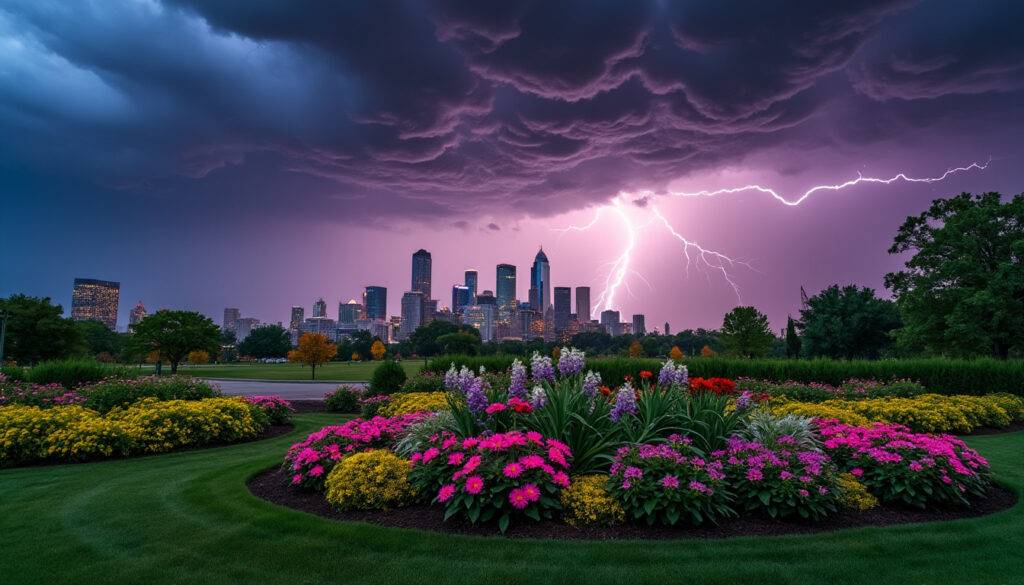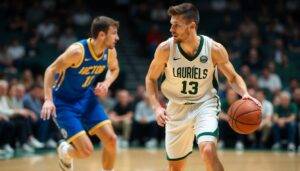The Thunder: A Beacon of Hope in Oklahoma City, 30 Years After Unspeakable Tragedy

The Oklahoma City Thunder didn’t arrive as just another NBA franchise — they arrived as a civic bridge. Thirty years after the Alfred P. Murrah Federal Building bombing, the team has become a visible symbol of healing, weaving the memory of April 19, 1995 into every locker-room talk, community program and championship parade. Players, staff and fans have embraced a simple creed: remember, serve, rebuild.
From quiet tours at the memorial to a title parade that stopped the city in its tracks, the Thunder turned sportsmanship into civic service. Below I’ll walk you through how that bond formed, who it touched, and what it teaches players and communities everywhere.
How The Oklahoma City Thunder Built A Culture Around The Memorial And The Oklahoma Standard
When the franchise landed in 2008, Sam Presti made a choice that shaped the team’s DNA: every new player and staff member would tour the Oklahoma City National Memorial & Museum before practice. That ritual was more than a PR move—it was an education in why this city rallies.
- First-hand tours: Players hear survivors’ stories and see the Field of Empty Chairs, grounding their role as ambassadors.
- Ongoing relationships: Players and staff meet families, first responders and museum staff year after year.
- Community programs: The team’s outreach mirrors the memorial’s tenets—service, honor and kindness.
As a former NBA pro, I can tell you culture sticks when it’s lived, not preached. The Thunder made that choice deliberately, and the payoff is a franchise that’s as much about civic duty as it is about wins. That commitment is the reason the team’s identity still feels authentic to Oklahomans.
Personal Stories That Shaped The Team’s Mission
Names and objects inside the museum anchor the players to a human story. Take the story of a son who read the names of the 168 victims, or the Survivor Tree with its scars—these are the details the team learned early on.
- Kyle Genzer’s story: personal loss, the ritual of remembrance and a handshake with team leaders that meant more than words.
- Artifacts and exhibits: the frozen clock at 9:02 a.m., the daycare chairs, and daily reminders that recovery was communal.
- Player responses: visits that change perspective—players often speak of renewed purpose after the tour.
Those moments aren’t symbolic; they change behavior in the locker room and in the community. That’s the real lesson: empathy fuels leadership, both on and off the court.
How The Team Turned Tragedy Into Tangible Civic Action
Beyond ceremonies, the Thunder backed the memorial with boots-on-the-ground help. From rebuilding courts after tornadoes to supporting mental-health programs for survivors, the franchise matched words with deeds.
- Disaster relief: team financial support and hands-on rebuilding after storms, echoing past acts of community service.
- Memorial collaborations: commemorative jerseys and exhibits—items designed to keep memory visible.
- Everyday outreach: clinics, food drives, hospital visits and programs for kids that tie sport to service.
The Thunder also partnered with major brands to amplify their work: team gear from Nike, retro tributes from Mitchell & Ness, licensed products available through Fanatics, and headwear by New Era became platforms to fundraise and raise awareness. On-court equipment and training use gear from Wilson Sporting Goods, while players rely on performance wear from Under Armour and Adidas, and hydration support from Gatorade. These partnerships made the message visible beyond Oklahoma City.
Concrete action, supported by community-minded brand partnerships, turned remembrance into sustained local investment. That’s how sports can change a city’s trajectory.
The City Edition Jersey And The Power Of Symbols
When the Thunder released a City Edition jersey honoring the memorial, it wasn’t just apparel. Design elements—gates, the Survivor Tree, the words Service Honor Kindness—were intended to teach. Fans recognized those details immediately.
- Meaningful design: every symbol tied to memorial elements and local history.
- Inclusive events: jersey giveaways, in-arena tributes and family nights that placed survivors front and center.
- Merch distribution: partnerships with vendors helped channel proceeds back to recovery programs.
As an ex-player, I’ve seen how a uniform can bond a locker room. Here, the uniform also bonded a city to its team—and that bond became part of every game-night chant. Symbols can teach; the Thunder proved they can also unify.
Championship Week: When A City’s Past Met Its Celebration
The day the Thunder clinched the title, a photo captured that collision of grief and joy—a team bus framed in front of the memorial, confetti in the air, and a phrase on the gate: hope. That image now hangs in the museum as a reminder that recovery and triumph can coexist.
- Parade moments: crowd estimates near half a million, fans lining the memorial, players honoring victims and survivors.
- Iconic photo: a parade shot donated to the memorial now displayed in an exhibit titled Hope Wins.
- Public ceremonies: a dedicated day for the GM who made the tradition part of the team’s foundation, and a public pledge to keep the memory alive.
That week showed how a championship can amplify a city’s story rather than erase it. The image of celebration beside remembrance became a new chapter in the city’s healing—one that will last for generations.
Moments From The Finals That Carried Meaning
Key scenes from the Finals made headlines and stitched community and sport tighter together. A player reading names, staff bringing flowers to each chair, and first responders honored at home games—each moment reinforced a shared identity.
- Player-led tributes: in-arena ceremonies that center survivors and families.
- First Responders Day: players meeting and signing for those who led the recovery effort.
- Media impact: national attention turned to the city’s story, giving the memorial a broader audience.
Turning tributes into widely shared moments meant the rest of the country got to see how sports can be a conduit for remembrance and unity. That is a powerful legacy of a championship.
What The Oklahoma Standard Teaches Players, Fans And Future Teams
The Oklahoma Standard is a playbook for civic responsibility: show up, serve, and lift others. Inside the Thunder organization, that standard shapes recruiting, community strategy and player orientation.
- Recruiting for character: new players are introduced to the memorial early to build empathy and purpose.
- Long-term partnerships: charities, schools and mental-health programs that keep support steady.
- Player accountability: athletes treated as community leaders who model service.
And because I played professionally, I’ll add a practical angle: leadership on the court starts with simple habits—showing up early, studying opponents, and treating every practice as a community task. Those habits transfer directly to civic leadership. The Oklahoma Standard proves that work ethic plus empathy builds lasting culture.
Lessons For Other Franchises And Cities
Not every city has the same history, but every team can learn from Oklahoma City’s model: embed local stories into team rituals, create meaningful partnerships with museums and nonprofits, and let symbols carry a message.
- Make rituals regular: tours, remembrance days and community service tied to the schedule.
- Use merchandising responsibly: limited-edition gear that funds local programs and raises awareness.
- Leverage partnerships: work with brands like Nike, Adidas, and equipment partners like Wilson Sporting Goods to expand impact.
When teams act with humility and consistency, sports becomes more than entertainment—it becomes a tool for sustained civic renewal. That’s the real win.
Further Reading And Context For Basketball Fans
For fans who want to dive into broader NBA narratives and gear history while reflecting on the Thunder’s arc, these pieces offer context:
- Top Western Conference players — how regional stars shape rivalries.
- Houston Rockets 2020 playoffs — playoff intensity and city identity.
- Lakers vs. Rockets rivalry — lessons in fan culture.
- Spalding TF1000 history — ball technology and court play.
- Recent clutch performances — how single moments define seasons.
Those reads help you see the Thunder’s story in a larger basketball tapestry. Context sharpens appreciation.
Why did the Thunder make the memorial tour mandatory for new players?
The tour roots players in the city’s history and creates a shared sense of responsibility. General manager Sam Presti believed firsthand understanding would shape the team’s character and community role.
How does the team support the memorial financially and symbolically?
Support includes special-edition jerseys, donations, public events, and the donation of parade photography to the museum. The team also leverages partnerships with brands to raise funds and awareness.
What is the Oklahoma Standard and how does it affect team behavior?
The Oklahoma Standard emphasizes service, honor and kindness. Inside the organization it affects recruiting, community programs and daily expectations—encouraging players to lead on and off the court.
Can other teams replicate Oklahoma City’s model?
Yes—by embedding local history into team rituals, establishing consistent community partnerships, and making symbolic gestures meaningful rather than performative. The key is long-term commitment.
